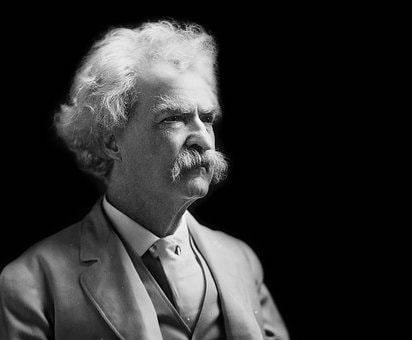Archived Blogs
|
Have you heard about the New Green Deal? I confess, I was feeling like I should review the old one before I spent too much time on the new one. It’s pretty interesting stuff and it all started with Mark Twain (The Adventures of Tom Sawyer). Samuel Clemens, also known as Mark Twain, wrote about the river pilots forcing the steamboat owners to meet their wage demands and recognize their union in his memoir Life on the Mississippi. It was a pivotal experience and he wrote about it again, this time in fiction, in his book A Connecticut Yankee in King Arthur’s Court: “…here I was, in a country where a right to say how the country should be governed was restricted to six persons in each thousand of its population…I was to become a stockholder in a corporation where nine hundred and ninety-four of the members furnished all the money and did all the work, and the other six elected themselves as a permanent board of direction and took all the dividends. It seemed to me that what the nine hundred and ninety-four dupes needed was a new deal.” Twain was a supporter of workers and unions. At his regular Monday Evening Club, Twain gave a speech praising the Knights of Labor (KOL). Founded in 1869, the KOL was was the first labor organization in the United States. It originated in secret and was designed to protect its members from retaliation from their employers. From that day on, Labor leaders used Twain’s quote from his Connecticut Yankee book as an inspiration to union members. Did I mention that Connecticut Yankee was one of Franklin D Roosevelt’s favorite books? Let's fast forward to when FDR accepted the Democratic nomination for the President of the US. According to independent producer John McDonough in The Birth of a New Deal, in his final paragraph of his acceptance FDR said: I pledge myself to a new deal for the American people. So, now you know where FDR got his inspiration. But where did the concept for the New Deal come from?
Let me tell you a little about his wife, Eleanor. Elenor was orphaned at a young age, married FDR against the wishes of his mother and then her husband had an affair. Her home life sounded pretty miserable and as Wikipedia says, “she resolved to seek fulfillment in a public life of her own.” She was an outspoken woman who gave speeches and made public appearances. Even worse—sometimes she publicly disagreed with her husband. In short, she was not the typical First Lady. Eleanor was a great supporter of civil rights for African-Americans, Women’s rights…in fact, all Human rights. (She served as the first chair for the United Nations Commission on Human Rights) Eleanor, along with several other women (Nancy Cook, Marion Dickerman and Caroline O’Day), opened up Val-Kill Industries in 1926, a non-profit furniture factory in Hyde Park, New York. The goal of the business was to employ young men and supplement farmer’s incomes by making early American furniture replicas. They created jobs in order to help those in need. Interesting, right? The stock market crashed in 1929, losing 90% of its value. Unemployment was sky-rocketing, the economy was failing and the financial system was in danger of collapse. Franklin Roosevelt had to do something. During his first one hundred days in office, he: Held fireside chats and urged people to put their money back in banks. Stopped Prohibition. (Thank you, sir) Enabled the federal government to build dams to control flooding and provide power to rural areas in Tennessee. (TVA) Gave commodities to farmers to end surpluses and boost prices. The economy increased but it was not enough. The country was still in a depression. So he launched even more programs: The Workers Progress Administration (WPA) created jobs building bridges, schools and highways. (Thank you, Eleanor) Social Security was created to provide pensions to workers and federal government support to dependents and the disabled. Loans were made to farmers. Public housing was created and the US minimal wage was increased. Did it work to pull us out of the Great Depression? Historians still debate this. Those that supported it (Liberals) felt that it did while those against (Conservatives) disagreed. It’s hard to say because in 1941, Pearl Harbor was bombed, and our country was thrown into a war. And war means lots of jobs and lots of money spent on industries supporting the war—so our country recovered. What is the legacy of the New Deal? Many may argue about how effective the New Deal was in restoring our country but most historians agree that the New Deal instituted the following changes: -The New Deal dramatically increased the power of the federal government and the President. -It made a commitment to the people to attend to their welfare, not just their safety. What is welfare anyway? Definition: statutory procedure or social effort designed to promote the basic physical and material well-being of people in need. I bet that last part’s important when we consider the New Green Deal.
0 Comments
Leave a Reply. |
Archives
October 2020
Categories |
COPYRIGHT 2017 SUSAN BADARACCO | Site Credits



 RSS Feed
RSS Feed